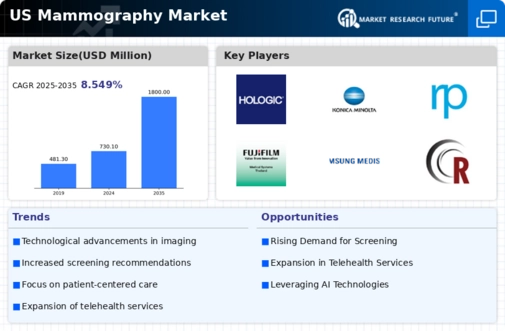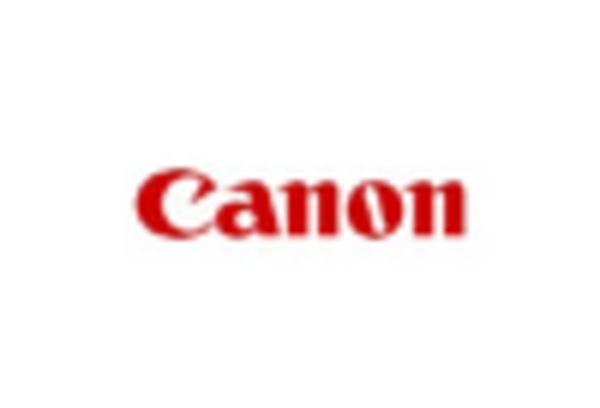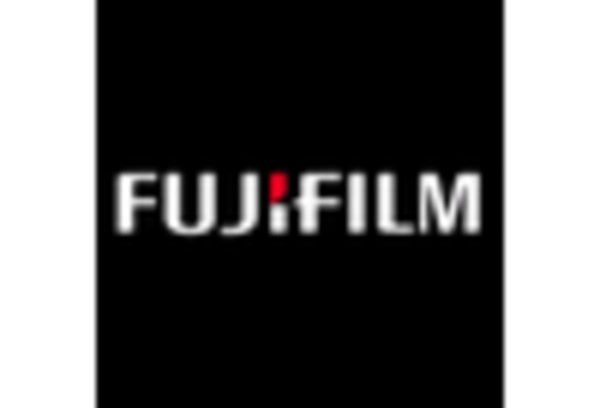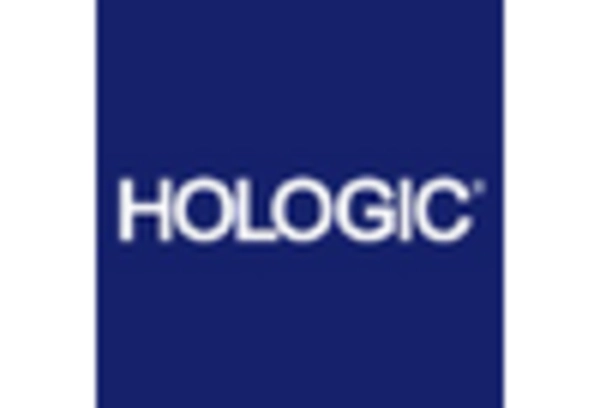Rising Incidence of Breast Cancer
The increasing incidence of breast cancer in the US is a primary driver for the mammography market. According to the American Cancer Society, approximately 1 in 8 women will develop invasive breast cancer during their lifetime. This alarming statistic underscores the necessity for regular screening, which is facilitated by advancements in mammography technology. As awareness of breast cancer risks grows, more women are likely to seek mammography services, thereby propelling market growth. The mammography market is projected to expand as healthcare providers emphasize early detection strategies, which are crucial for improving survival rates. Furthermore, the rising number of breast cancer cases is expected to lead to increased funding for screening programs, further stimulating demand for mammography services.
Government Initiatives and Funding
Government initiatives aimed at improving breast cancer screening rates significantly influence the mammography market. Programs such as the National Breast and Cervical Cancer Early Detection Program (NBCCEDP) provide funding for low-income women to access mammography services. These initiatives not only enhance accessibility but also raise awareness about the importance of regular screenings. In recent years, federal and state governments have allocated substantial resources to support these programs, which has resulted in increased participation rates in mammography screenings. The financial backing from government sources is likely to continue, fostering an environment conducive to growth in the mammography market. As more women gain access to these essential services, the overall demand for mammography is expected to rise.
Technological Innovations in Imaging
Technological innovations in imaging techniques are transforming the mammography market. The introduction of 3D mammography, or digital breast tomosynthesis, has shown to improve detection rates of breast cancer, particularly in women with dense breast tissue. Studies indicate that 3D mammography can increase cancer detection rates by up to 40% compared to traditional 2D mammography. As healthcare facilities adopt these advanced technologies, the quality of screening improves, leading to higher patient satisfaction and increased screening rates. Furthermore, the integration of advanced imaging technologies is likely to attract more patients, thereby driving growth in the mammography market. The ongoing research and development in imaging modalities suggest a promising future for enhanced mammography services.
Growing Focus on Preventive Healthcare
The growing focus on preventive healthcare is a significant driver for the mammography market. As healthcare systems shift towards preventive measures, the emphasis on early detection of diseases, including breast cancer, becomes paramount. This trend is reflected in the increasing number of health campaigns promoting regular mammography screenings. Additionally, insurance providers are increasingly covering preventive services, which encourages women to participate in regular screenings. The proactive approach to healthcare is likely to result in a higher demand for mammography services, as more women recognize the importance of early detection. This cultural shift towards preventive care is expected to sustain growth in the mammography market, as it aligns with broader public health goals.
Aging Population and Increased Screening
The aging population in the US is a crucial factor influencing the mammography market. As women age, their risk of developing breast cancer increases, leading to a higher demand for screening services. The US Census Bureau projects that by 2030, the number of women aged 65 and older will reach approximately 20 million. This demographic shift is likely to result in a surge in demand for mammography services, as older women are encouraged to undergo regular screenings. Healthcare providers are adapting to this trend by offering more accessible and tailored mammography services for older populations. Consequently, the aging demographic is expected to play a pivotal role in driving growth within the mammography market, as the need for effective screening solutions becomes increasingly critical.

















Leave a Comment